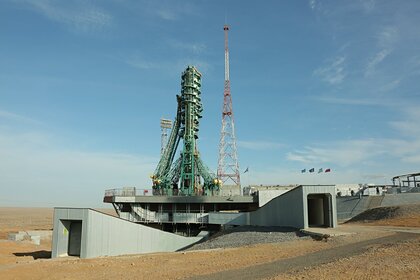During his speech at the Space Integration forum, Roscosmos CEO Dmitry Rogozin recalled a sixfold reduction in the number of launch complexes at the Baikonur cosmodrome located in Kazakhstan and leased by Russia. The statement of the head of the state corporation is quoted by RIA Novosti .
According to him, a critical situation has developed at the cosmodrome. "When we entered into the lease agreement 25 years ago, there were 18 launch complexes, now there are three left," the CEO said.
According to him, two launch complexes remained for launching heavy Proton-M missiles. One is for the launches of medium-sized Soyuz-2 carriers. "In order for Baikonur to continue its development, slogans are not enough, assurances of friendship are not enough. Launch complexes are needed," the head of the state corporation said.
Rogozin recalled that Russia is currently working with Kazakhstan on the Baiterek project, which involves launching promising Soyuz-5 medium missiles from Baikonur.
According to TASS, during the forum, Chairman of the Aerospace Committee of the Ministry of Digital Development, Innovation and Aerospace Industry of Kazakhstan Baubek Oralmagambetov spoke about the planned cooperation with Russia and the UAE on the modernization of the Gagarin launch, from which it is possible to launch Soyuz-2. "We hope that the signing of the intergovernmental agreement will take place in the first quarter of next year," the official said.
In July 2020, the former CEO and former designer of the Khrunichev Center, Vladimir Nesterov, who worked on the Angara family of rockets, said that the Soyuz-5 carrier created by the Progress Rocket and Space Corporation (RCC) was not needed.
In the same month RIA Novosti It was recalled that Soyuz-5 (Irtysh) is planned to be launched at Baikonur from the Nazarbayev Launch complex, which was named after the first President of Kazakhstan, Nursultan Nazarbayev, on the initiative of Russian President Vladimir Putin.
As part of the Baiterek project, it is planned to launch Soyuz-5 from a converted launch pad for the Ukrainian Zenit-3SLB carrier at Baikonur. In the joint Russian-Kazakh project, Moscow is responsible for the creation of the carrier, and Nur-Sultan finances the work on the launch infrastructure. Flight tests of the Soyuz-5 are scheduled for the first half of this decade. The carrier is a two-stage medium rocket. The launch vehicle weight is about 530 tons, length - 61.87 meters, diameter - 4.1 meters, first stage engine - RD171MV, second stage engine - RD0124MS. Fuel components: the oxidizer is liquid oxygen, the fuel is naphthyl. The mass of the payload launched into low Earth orbit from the Baikonur cosmodrome is about 18 tons.
Ivan Potapov

